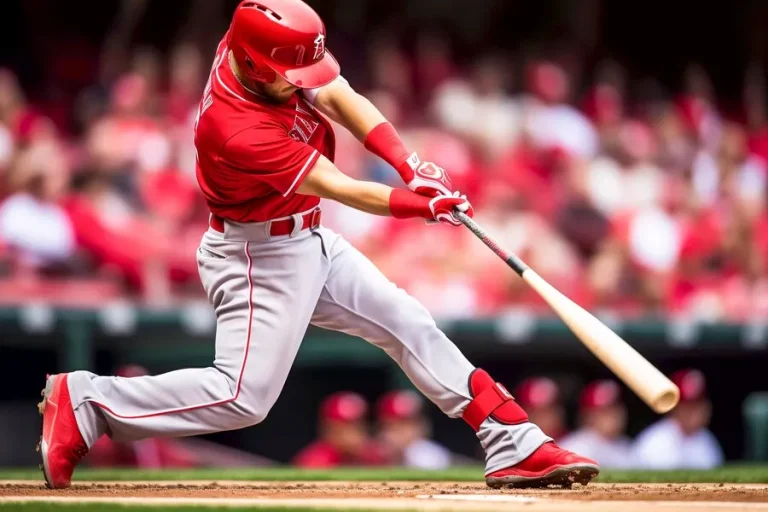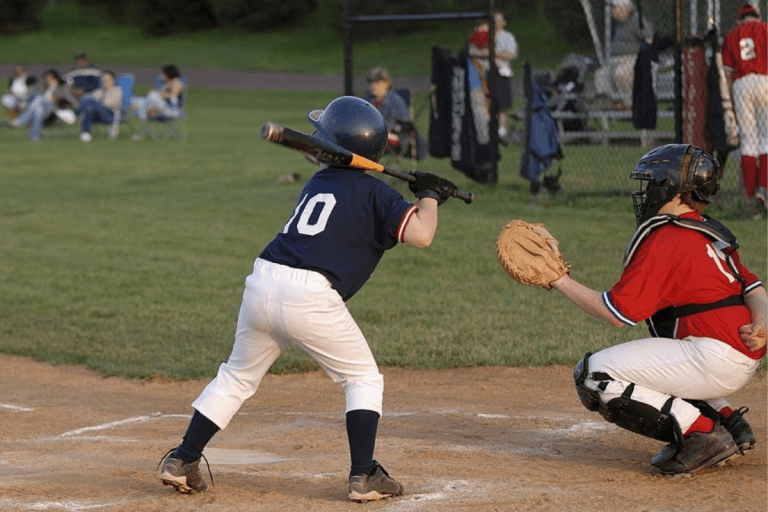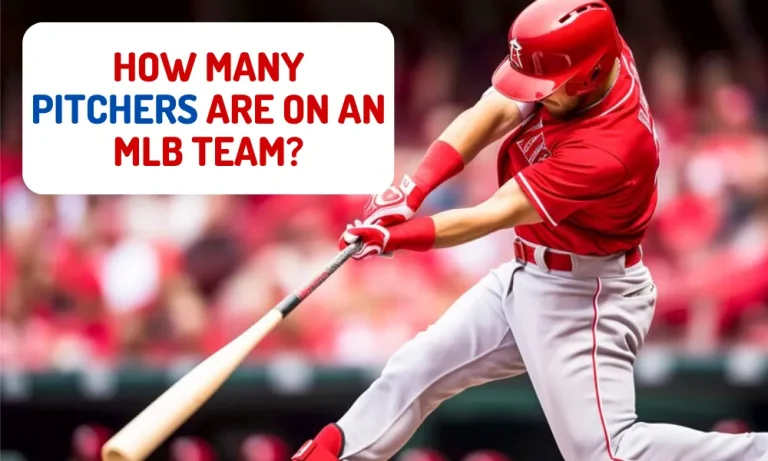In Baseball, What Does Tipping Pitches Mean?
In baseball, what does tipping pitches mean? Have you ever wondered why some pitchers seem to struggle while others effortlessly dominate on the mound? The answer may lie in the art of disguising pitches. Tipping pitches refers to the unintentional cues or signals that a pitcher unknowingly gives away to the opposing team, revealing the type of pitch that is about to be thrown.
This seemingly minor detail can have a significant impact on the outcome of the game. In this blog post, we will explore the concept of tipping pitches, its implications for pitchers, and strategies to prevent it. So, let’s dive in and uncover the secrets behind this intriguing aspect of the game.
How does tipping pitches affect the pitcher?
When it comes to tipping pitches in baseball, the consequences for the pitcher can be quite significant. Opposing teams are always on the lookout for any subtle cues or signals that give away the type of pitch about to be thrown. Once they detect these cues, they can adjust their approach accordingly, making it easier for them to anticipate and make solid contact with the ball. This puts the pitcher at a disadvantage, as their pitches become predictable and easier to hit.
Throughout baseball history, there have been numerous examples of famous pitchers who were known for inadvertently tipping their pitches. One such example is Hall of Fame pitcher Greg Maddux. Maddux had an exceptional career, but his tendency to slightly change his grip for different pitches became noticeable to astute hitters. This allowed them to anticipate the type of pitch coming their way, giving them an edge at the plate.
Common signs of tipping pitches
When it comes to detecting tipped pitches, there are several common signs that opposing teams look for in a pitcher’s delivery. These signs can provide valuable insights into the type of pitch that is about to be thrown and give hitters an advantage at the plate.
Visual cues play a crucial role in identifying tipped pitches. Observing the pitcher’s body movements, hand positioning, or grip changes can provide telltale signs of the upcoming pitch. For example, a slight change in grip pressure or a specific finger placement on the ball can indicate a breaking ball or a fastball. Astute hitters keenly observe these visual cues to gain an edge and adjust their approach accordingly.
Apart from visual cues, auditory cues can also give away tipped pitches. Different sounds while releasing the ball can be indicative of the type of pitch being thrown. For instance, a changeup might produce a distinct sound due to the altered grip and release. Hitters with a keen ear can pick up on these auditory cues and adjust their timing accordingly.
Timing cues also play a significant role in detecting tipped pitches. Inconsistencies in the pitcher’s delivery, such as variations in the time it takes to deliver different pitches, can be a clear giveaway. Hitters pay close attention to these timing cues to anticipate the pitch and gain an advantage at the plate.
Strategies to prevent tipping pitches
Preventing the tipping of pitches is crucial for maintaining a pitcher’s effectiveness on the mound. There are several strategies that can be employed to address and eliminate any issues related to tipping.
Working closely with coaches and teammates is a valuable strategy to identify and address tipping issues. Coaches and teammates can provide valuable feedback and observations during practice sessions and games. By actively seeking their input, I can gain insights into any unintentional cues or patterns that may be giving away my pitches. Collaborating with them allows for a collective effort in identifying and rectifying any tipping tendencies.
Video analysis and feedback sessions can be immensely helpful in identifying subtle cues that might go unnoticed during live games. Recording and reviewing game footage allows me to closely examine my mechanics, hand positioning, and delivery. By analyzing these videos, I can pinpoint any potential tipping issues and make the necessary adjustments to my pitching technique.
Developing consistent mechanics and delivery is another effective strategy to prevent tipping pitches. By focusing on maintaining a consistent arm slot, release point, and body movements, I can minimize any variations that might give away the type of pitch. Consistency in mechanics not only enhances my deception but also makes it harder for opposing teams to detect any patterns in my delivery.
The role of technology in detecting tipped pitches
Technology has revolutionized the way tipped pitches are detected and addressed in the world of baseball. The introduction of advanced technologies such as video analysis and pitch-tracking systems has significantly enhanced the ability to identify subtle cues and patterns that may indicate a tipped pitch.
Video analysis has become an invaluable tool in the detection of tipped pitches. High-quality cameras and software allow for precise examination of a pitcher’s mechanics and delivery. By closely analyzing video footage, technology helps identify even the slightest changes in hand positioning, grip, or body movements that might give away the type of pitch. This level of detail allows coaches and players to make the necessary adjustments to eliminate any unintentional tipping.
Pitch-tracking systems have also played a vital role in detecting tipped pitches. These systems use advanced sensors and cameras to track the trajectory, spin rate, and movement of each pitch. By analyzing this data, technology can identify any inconsistencies or deviations that may indicate a tipped pitch. This real-time feedback allows pitchers to make immediate corrections and maintain their effectiveness on the mound.
Successful interventions using technology have been witnessed in professional baseball. For instance, the Houston Astros famously used video analysis and technology to detect tipping issues in their opponents’ pitching during the 2017 season. This knowledge enabled their hitters to make more informed decisions at the plate, leading to improved performance and ultimately a World Series championship.
Famous instances of tipping pitches in baseball history
Throughout baseball history, there have been notable instances where tipping pitches influenced game outcomes, often leading to significant victories or defeats. These instances serve as a reminder of the importance of preventing and exploiting tipped pitches.
One such famous case is the 1951 World Series between the New York Giants and the New York Yankees. Giants pitcher Allie Reynolds was suspected of tipping his pitches, allowing the Yankees to gain an advantage.
The Yankees’ hitters were able to anticipate the type of pitch based on Reynolds’ subtle movements, resulting in a dominant performance by the Yankees and ultimately clinching the World Series title.
On the other hand, there are stories of players who successfully exploited tipping pitches to gain an advantage. One notable example is Derek Jeter, the former shortstop for the New York Yankees. Jeter was known for his exceptional ability to pick up on pitchers’ tipping tendencies.
By closely observing their movements and cues, he would be able to anticipate the type of pitch and adjust his approach accordingly. This skill allowed Jeter to excel in crucial moments and make impactful contributions to his team’s success.
FAQs
What does “tipping pitches” mean in baseball?
Tipping pitches refers to unintentional cues or signals given by a pitcher that reveal the type of pitch they are about to throw, potentially giving an advantage to the opposing team.
How can pitchers inadvertently tip their pitches?
Pitchers may unknowingly tip their pitches through subtle changes in their grip, body language, or delivery mechanics, allowing observant hitters to anticipate the pitch type.
What are the consequences of tipping pitches?
Tipping pitches can lead to a significant disadvantage for the pitcher, as opposing hitters can anticipate the pitch and adjust their approach accordingly, potentially resulting in more hits and runs.
How can pitchers prevent tipping their pitches?
Pitchers can work with coaches and utilize video analysis to identify and correct any unintentional cues or patterns that may reveal the type of pitch they are throwing.
Can hitters exploit tipped pitches to their advantage?
Yes, observant hitters who recognize a pitcher’s tipping tendencies can adjust their approach and increase their chances of making solid contact or selecting the optimal pitch to swing at.
Conclusion
To sum it up, tipping pitches in baseball can be a game-changer. This seemingly innocuous act of unintentionally revealing the type of pitch about to be thrown can give the opposing team a massive advantage. As we have discussed, pitchers who inadvertently tip their pitches may face consequences in their performance and ultimately impact their team’s success. Therefore, addressing and rectifying tipping issues is crucial for pitchers aiming to stay ahead in the game. With advancements in technology and continued focus on deception techniques, the future of detecting and preventing tipped pitches in baseball looks promising.



